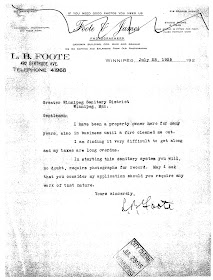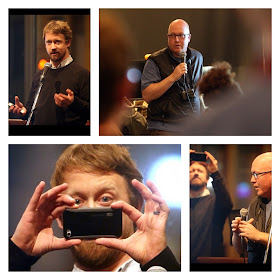Leisure leisure leisure leisure.
We all want it. Its allure gets us through the cold, grinding winters of Winnipeg with its promise of happiness, escape, good company or simply peace of mind. I can think of nothing better than hopping into a car and hitting the highway in search of a beach, that pervasive symbol of leisure that now dominates the global tourism industry. That is assuming, of course, that I have the means to get to the beach, the time off in order to do so and presumably somewhere to reside if I intend to stay for more than twelve hours. Yes, leisure was and continues to be a particularly class segregated component of urban life.

Grand Beach was one of the early recreation destinations to materialize in the immediate radius of early twentieth century Winnipeg. L.B. Foote captures a group of people enjoying a leisurely moment on the beach in his photo from 1914, which reinforces the image of leisure as relaxation, company and the unobstructed pursuit of happiness.
It appears to be tea time in the photo – that unmistakable British soft-spot. But if you look closely, the cups they are using appear to have chips in their paint, probably because they were metal, the forerunner to disposable plastic or Styrofoam. We can only assume then that it was merely a top up of water. This duality is also evident in the subjects of the photograph, in what it shows and what it represents. It shows a group of mostly young women enjoying a day at Grand Beach, with a Bill Murray look-a-like peering at the group from the background and some children playing further back, among others who elude the focus of Foote’s camera and exist only as blurs.
Taken in 1914, the photo captures those who could afford to depart the city in order to pursue leisure, while those who could not remain invisible, stuck at work, stuck at home – stuck in Winnipeg. This was an era that featured a growing middle class, restless and eager to breach their urban boundaries and enjoy the immensity of the Canadian landscape.
Of course the photo has been staged, indicated by the arrangement of its subjects, who are mostly looking at the camera. What is more interesting, however, is that some are not. One woman in particular, situated in the bottom left of the photo, displays a quite intriguing expression as she looks up to someone off-screen, just to Foote’s left. She is wearing a hat that is unlike any of the others, seems to have a wedding ring on, and wears an ambiguous expression that approaches but does not quite reach skepticism. The other figure who immediately catches the eye is the only person in the group standing. The middle-aged man is in the act of pouring water. Unlike many of the others, he does not convey a sense of relaxation: he looks occupied, perhaps even somewhat begrudging of Foote and his camera, and the break in action. But then he may just have been captured at a bad time, it is impossible to know.
I have spent the majority of every summer just ten minutes north of Grand Beach in Victoria Beach. Yes, the name is suggestive; and yes, it does live up to its waspy name. It was connected to its larger, more prominent southern neighbour by way of the CNR line that travelled north from Winnipeg, stopping along the way at East Selkirk, Libau and up along the east shores of Lake Winnipeg. The train winds its way into this photo in the top left corner, appearing startlingly close to the mighty freshwater lake. In the context of this era, the train served as a symbol of mobility and class intersection because it was increasingly affordable to the middle class. The train represents a more accessible form of transportation, one that enabled travel among those who otherwise could not have afforded to travel, due to either time or financial constraints. It also permitted people to travel to areas such as Grand Beach, that a generation ago had been isolated and remote. Grand Beach developed by way of attracting the middle and upper classes of booming Winnipeg, offering an appealing escape from the toils and stresses of urban life, and the train was the means by which visitors travelled to it for over fifty years. This is not to say that transportation by train was completely egalitarian, considering they were not allowed to run on Sundays until 1923, the day of the week which coincidentally was many workers’ only day off. It is difficult to determine the class of the group depicted in the photograph with any degree of certainty, but it is unlikely that they were recent immigrants or poor. Perhaps this ambiguity reveals as much about the medium of photography as it does the economic status of Foote’s subjects.
Those familiar with the layout of Grand Beach will immediately recognize the location of this photo as being the primary entrance to what has since evolved into the most capacious and popular beach in Manitoba. Early infrastructure is apparent in the photo, including a rather sketchy looking dock, a track that has since been removed, and the iconic canoe, laying idle, awaiting adventure. Foote also photographed Grand Beach a decade later. Those later images captured the growth of the resort both in terms of its infrastructure and its number of users. In the age of the digital camera it’s easy to forget that early 20th century photographs were rarely taken for free or by a stray family member. While Foote may be capturing leisure, make no mistake that while doing so he is himself at work.
Yes, the depiction of leisure captured by this Foote photograph reflects those who were able to experience what was then an exotic and novel escape. In 1914 Winnipeg
there were no guaranteed two day weekends, monthly statutory holidays or accrued pain vacation time, and thus not all were capable of leaving the city in search of leisure. I am thankful that this has changed, to an extent, as I consider myself extremely lucky to have been able to experience my summers at Victoria Beach. That being said, I understand that this photo, while it capture a moment in the lifestyle of the privileged, should serve to remind us who is not enjoying an afternoon on the beach, and perhaps even provoke us to ponder why.
- Chris Thomas
* * *
Chris Thomas is entering his fourth year at the University of Manitoba, pursuing an honours degree in history. He is currently working as a research assistant for two professors, Esyllt Jones on her forthcoming book on Canadian medicare, and Paul Earl on his book chronicling a hundred years of the Canadian grain trade.
 My favourite is a photograph I write about in the introduction. It appears on page 32 of the book. It is a woman in Aboriginal dress, her hair in braids, smoking a pipe. Many of Foote’s images are technically almost perfect. This one is partly hazy and has a ghost-like blur on one side, and a little girl in a white party dress. The woman is a mystery to me, and I like that. I don’t think history should be about definitive answers. Sometimes the questions are far more interesting.
My favourite is a photograph I write about in the introduction. It appears on page 32 of the book. It is a woman in Aboriginal dress, her hair in braids, smoking a pipe. Many of Foote’s images are technically almost perfect. This one is partly hazy and has a ghost-like blur on one side, and a little girl in a white party dress. The woman is a mystery to me, and I like that. I don’t think history should be about definitive answers. Sometimes the questions are far more interesting.  After it is finished, I want to write a book about my father. He was a music teacher, a Welshman. His family members were Welsh nationalists. He taught me a lot about curiosity and independence of thought, but also tolerance. We lived in rural Saskatchewan, where he built rock gardens, took me bird watching, drove a turquoise Peugeot, and wore a Sherlock Holmes-style hat and a British overcoat to work. As you can imagine, he was considered a total weirdo. This never bothered him. He developed Alzheimer’s Disease when he was in his fifties. Last year, I inherited his old records, which he often played in the house when I was young. My plan is to write my memories of him one record at a time. My partner Todd and I are building a cottage on the beautiful Whitemouth River, and I plan to listen to my dad’s records and write a sort of biography, which will also be a history of an immigrant life. I am going to start with Peter Ustinov’s classic recording of Prokofiev’s “Peter and the Wolf.”
After it is finished, I want to write a book about my father. He was a music teacher, a Welshman. His family members were Welsh nationalists. He taught me a lot about curiosity and independence of thought, but also tolerance. We lived in rural Saskatchewan, where he built rock gardens, took me bird watching, drove a turquoise Peugeot, and wore a Sherlock Holmes-style hat and a British overcoat to work. As you can imagine, he was considered a total weirdo. This never bothered him. He developed Alzheimer’s Disease when he was in his fifties. Last year, I inherited his old records, which he often played in the house when I was young. My plan is to write my memories of him one record at a time. My partner Todd and I are building a cottage on the beautiful Whitemouth River, and I plan to listen to my dad’s records and write a sort of biography, which will also be a history of an immigrant life. I am going to start with Peter Ustinov’s classic recording of Prokofiev’s “Peter and the Wolf.”






































